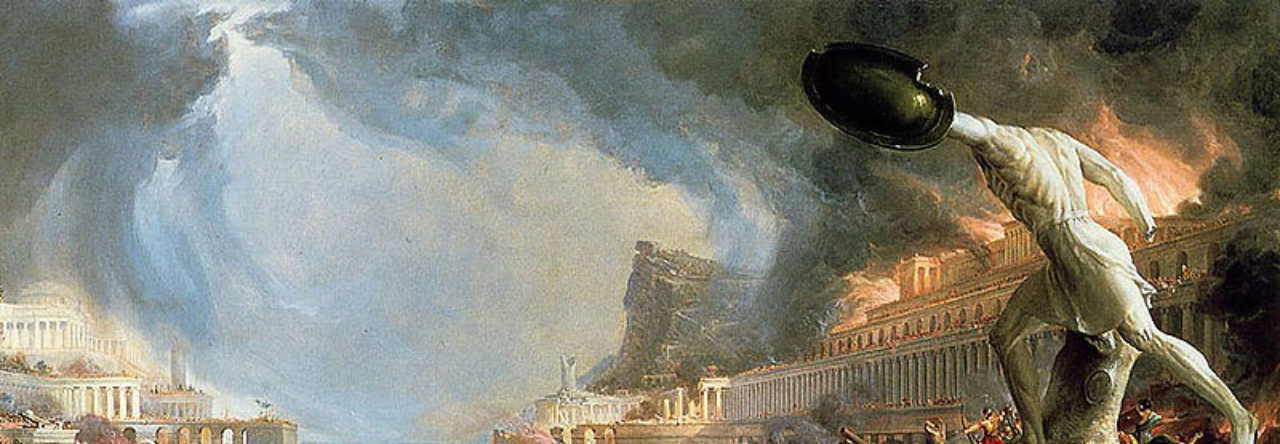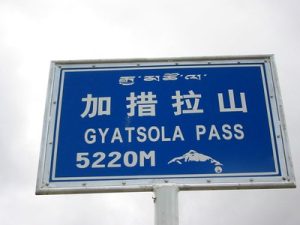
The Kunlunshan is the Chinese equivalent of the Front Range of the Rockies in Colorado, except they are much higher.
From time immemorial, even before humanity began writing, the Himalayas were never recorded as breached by a monsoon. During my trip across Central Asia in 2003 I traveled from Golmud, China to Lhasa, the provincial capital of Tibet–the moment we entered the Kunlunshan we were never lower than 10,000 feet (3,048 meters). On the second leg of my trip from Lhasa to Nepal along the Friendship Highway I was never lower than 12,000 feet (3,657), often as high as 14,000 feet (4,267 meters). I passed through three passes of 5,000 meters (16,402 feet), higher than every mountain in the lower 48 states and less than 3,000 feet lower than the highest in Canada. In other words, Tibet is one serious rain shadow.
As I said, within the time humanity has kept records, both written and oral, this has never happened: a minimum of 4,925 years and a maximum of 50,000. Those 50,000 years include exactly zero notices of the monsoon breaching the Himalayas. This is a profound silence. Especially when considering the many verbal and written notices of a great flood across multiple pre-literate cultures. The monsoon actions that occurred in the last several weeks are a unique, unprecedented occurrence, although knowing what I know of rivers debouching out of the Central Asian mountain ranges, I will concede that the Great Flood myth could be based on a Monsoon breach. That said, Tibetan verbal and written traditions are eerily silent.
What exactly happened, then? The short answer comes from Climovo:
“This year scientists say the monsoon winds breached the Himalayan climate barrier and pushed moisture into Tibet. Experts at the Wadia Institute report (ETV Bharat) and analysis in Zee News show satellite images and weather maps that point to an unusual northward flow of monsoon moisture in 2025.”
So how did this happen? What climate changes caused it? I quote Climovo again:
“Two weather systems came together: the summer monsoon and a strong band of western disturbances. When they met over the mountains, the air was pushed and twisted in ways that let moisture ride over or through lower passes. Satellite analysis cited by the Wadia Institute and discussed in news coverage shows the plume of moisture reaching north of the ridge—something scientists call a breach of the Himalayan shield.”
What are Western disturbances? As Wikipedia notes:
“Western disturbances originate in the Mediterranean region in the Mediterranean Sea. A high-pressure area over Ukraine and neighbourhood consolidates, causing the intrusion of cold air from polar regions towards an area of relatively warmer air with high moisture. This generates favorable conditions for cyclogenesis in the upper atmosphere, which promotes the formation of an eastward-moving extratropical depression. Traveling at speeds up to 12 m/s (43 km/h; 27 mph), the disturbance moves towards the Indian subcontinent until the Himalayas inhibits its development, upon which the depression rapidly weakens. The western disturbances are embedded in the mid-latitude subtropical westerly jet stream.”
How many disturbances are we talking about? ZeeNews reports there were up to “[n]ineteen disturbances . . . five each in June, July and August and three more in early September.”
What’s even more odd is that “[t]hese weather systems are usually winter phenomena. (Emphasis added, spk.) They bring rain and snow to north India and the Himalayas in colder months. This year, they collided with the monsoon’s moist currents, pushing them further north [earlier].”
I’d also note that there was a substantial drought in the Pontic Steppe of the Ukraine and Russia this year, leading to a lesser wheat crop. Drought is often caused by prolonged high pressure systems, at least here in Texas.
What are the results of this unique monsoon?
The torrential rainfall, says Reuters, is responsible for “killing 880 in Pakistan over the season while in India, nearly 150 people have lost their lives in August alone.
Moreso, in “India Punjab, 37 people have died since the start of August and the rain has destroyed crops across tens of thousands of hectares.” The destruction of crops, obviously has a knock-on effect of famine. Even worse, in Pakistan’s Punjab “1.8 million people have been evacuated in recent weeks after floodwaters submerged nearly 3,900 villages.”
There is much more damage to come, as it is August and the high Himalayan rivers are running at above capacity. Many rivers in Pakistan and India–Punjap, after all, means the ‘Land of Five Waters–expect flooding and more chaos as a result. More agriculture ruined. More famine. More suicides in the Indian countryside. It’s simply devastating.
I’d also add that, because of the northward pressure on the monsoon, South India, like Tamil Nadu, the entire Deccan, and the Western Ghats got 48% less rain than usual from the monsoon season. More catastrophes soon to happen there.
Please check the links and this video (seriously, you need to watch this video–why? Because the comments are mostly coming from India and reporting in on the reality of the situaiton) if you want to more fully understand the rare, almost unique occurrence that happened this year. It’s just another data point, right? Not really, it’s a serious anomaly that ought to rouse an immediate sense of urgency to act. Dangerous climate anomalies accelerate, continuing to pile up, higher and higher–no pun intended.
How many more until we act? My answer: serious hardcore sustained intense climate actions in the United States. Only then.
Hope it isn’t too late.
If you’ve read this far, and you’ve read some of my articles and most if not all of Ian’s, then you might wish to Subscribe or donate. Ian has written over 3,500 posts, and the site, and Ian, need the money to keep the shop running. So please, consider it.


Troy
Minor edit:
> From time immemorial, even before humanity began writing were the Himalayas breached by a monsoon.
were the Himalayas never breached by a monsoon.
Sean Paul Kelley
@Troy: during the last glacial maximum, of course they were. But, as I said, not within the last 50,000 years there are no verbal notices of it occuring, even though we get Noahs flood, massive flooding in Mesopotamia, Hindu creation myths indicating a flood, same in the Indus Valley civilizations, and if I am not mistaken in Egypt too.
Please watch the video as it explains it better and clearer than I can.
elkern
“How many more until we act?”
Many, many more.
All countries will be stuck merely REacting to climate-related disasters for at least another decade.
Meaningful action to stop making things worse – reducing carbon emissions to less-than-net-zero – will not happen until we break the PetroCorps’ stranglehold over US politics. They own the GOP Infrastructure – the network of Think Tanks and Media outlets which effectively control the minds of a huge chunk of the US electorate.
For a while, it looked like the Democratic Party had cobbled together an alliance of financial interests (Wall Street, Silicon Valley, and Hollywood) to counterbalance the Extractive Industries (Petro, Mining, Ag), but it failed. Silicon Valley has promised Wall Street that AI can eliminate millions of white collar jobs – but that requires zilloWattHours of electricity which only Petro (& maybe Uranium Mining) can provide.
IMO, it will require something like a post-modern Jihad to break that unholy alliance.
Sean Paul Kelley
@Troy: I read your comment way, way incorrectly. My apologies. I appreciate your sharp eye!